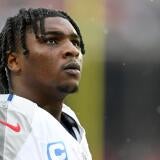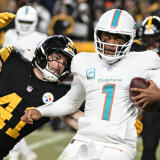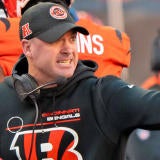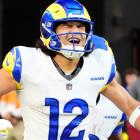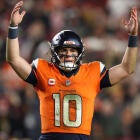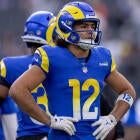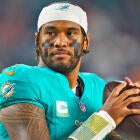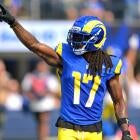Biggest NFL Draft busts for all 32 NFL teams, and, no, Johnny Manziel's not one
Everybody whiffs in the draft. Here's the worst pick for each franchise since 1995

It's that time of year. With the 2017 NFL Draft just days away, we look back before looking ahead. We've previously written about the biggest draft steals for every NFL team, so naturally it's time to look at the biggest NFL Draft busts.
Most teams have several candidates, but -- and this is important for our purposes here -- we only looked at players drafted since 1995. Many of these decisions had lasting effects on the organizations. For every Peyton Manning and Andrew Luck who lived up to the franchise-quarterback hype, there was Ryan Leaf and Robert Griffin III.
If nothing else, this exercise reinforces the old cliché: The draft is as much art as science.
 Arizona Cardinals
Arizona Cardinals
Matt Leinart, QB, 10th overall, 2006: Leinart was considered the next can't-miss prospect, a sure-fire franchise quarterback whose lack of physical tools were exposed in the NFL. Taken seven picks after Vince Young, and just before Jay Cutler, Leinart lasted four years in Arizona and started 17 games, going 7-10. After stints in Houston and Oakland, he was out of the league by 2013.

 Atlanta Falcons
Atlanta Falcons
Jamaal Anderson, DE, eighth overall, 2007: It must pain the Falcons to look back on this pick. They passed up Patrick Willis, Marshawn Lynch and Darrelle Revis to take Anderson, who played four seasons in Atlanta and only recorded 4.5 sacks. He last played in an NFL game in 2012.
 Baltimore Ravens
Baltimore Ravens
Matt Elam, S, 32nd overall, 2013: Kyle Boller was also in the running here, and while he struggled to become the quarterback then-coach Brian Billick envisioned, he contributed way more to the Ravens' organization than Elam, who never came close to replacing the irreplacable Ed Reed. He started 26 games in his first two seasons, logging a single interception. Elam was arrested in the offseason and the Ravens chose not to re-sign him.
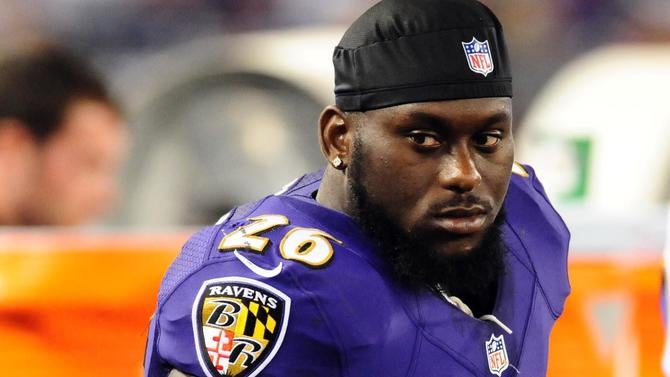
 Buffalo Bills
Buffalo Bills
Aaron Maybin, DE, 11th overall, 2009: Maybin was listed at just 237 pounds, and he never developed into the pass-rushing force the Bills had hoped. He played two seasons in Buffalo and started only once. He didn't record a sack with the Bills, but had six with the Jets in 2011, his next-to-last year in the league.
 Carolina Panthers
Carolina Panthers
Rae Carruth, WR, 27th overall, 1997: Taken one pick before Trevor Pryce, Carruth lasted just three seasons in the NFL. He had 62 receptions and four touchdowns. He is in prison after he was found guilty of conspiracy to murder the mother of his unborn child in 1999.
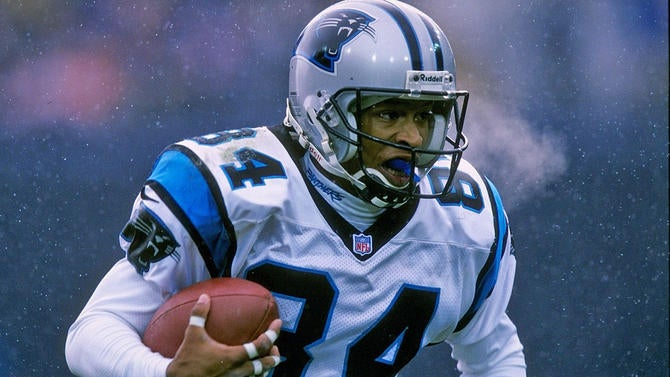
 Chicago Bears
Chicago Bears
Cade McNown, QB, 12th overall, 1999: McNown was sandwiched between two other busts -- Curtis Enis, taken fifth overall in 1998, and David Terrell, taken eighth overall in 2001. He lasted two seasons, starting 15 games and winning just three times.
 Cincinnati Bengals
Cincinnati Bengals
Ki-Jana Carter, RB, first overall, 1995: It might be unfair to call Carter a bust, but he was certainly unlucky. He suffered a serious knee injury on the third carry of his first preseason game and missed all of 1995. In 1998, he was limited to just one game because of a wrist injury, and a year later, he played in three games before a dislocated knee ended his season. In four years with the Bengals, Carter rushed for more than 100 yards exactly one time.

 Cleveland Browns
Cleveland Browns
Justin Gilbert, CB, eighth overall, 2014: There are myriad candidates for this honor but Gilbert is one of the most disappointing draft picks in recent team history. It's easy to overlook just how bad Gilbert was because he was in the same draft class as Johnny Manziel. But where Manziel showed promise, there was little indication that Gilbert was interested in becoming a good football player. He started three games in two years before the Browns dumped him on the Steelers for a late-round pick. Gilbert saw little playing time in Pittsburgh, and when he was released in the offseason, former teammate Joe Thomas tweeted this:
If you don't like football, it doesn't matter how talented you are, your star will burn out quick. https://t.co/r7PfDSTljL
— Joe Thomas (@joethomas73) February 6, 2017
 Dallas Cowboys
Dallas Cowboys
Morris Claiborne, CB, sixth overall, 2012: The Cowboys traded their second-round pick to move up and grab Claiborne, who at the time was considered one of the best cornerbacks in the draft. Instead, he has struggled with consistency and health, and after five up-and-down years in Dallas, Claiborne signed a one-year deal with the Jets this offseason.

 Denver Broncos
Denver Broncos
Alphonso Smith, CB, 37th overall, 2009: This pick embodies all that was wrong with the Josh McDaniels era. Smith was a smallish, undersized cornerback who was in Denver for just one season before he was traded to the Lions. Compounding matters: The Broncos gave up a 2010 first-round pick to get Smith and that pick would turn out to be Earl Thomas.
 Detroit Lions
Detroit Lions
Charles Rogers, WR, second overall, 2003: Rogers showed glimpses of potential as a rookie, hauling in 22 passes for 243 yards and three touchdowns in five games. But a broken collarbone limited him to 10 games over the next two seasons, including just one appearance in 2004. He played his last NFL down in 2005 and has battled substance-abuse issues in recent years.

 Green Bay Packers
Green Bay Packers
Justin Harrell, DT, 16th overall, 2007: Taken right after Darrelle Revis and Lawrence Timmons, Harrell was hampered by injuries throughout his brief career. He started two games in parts of three seasons and never recorded a sack.
 Houston Texans
Houston Texans
Travis Johnson, DT, 16th overall, 2005: The hope was that Johnson would bolster the Texans' defensive line but it never happened. Drafted right after Pro Bowl linebackers Thomas Davis and Derrick Johnson, Johnson struggled to be a disruptive force as a pass rusher. In four seasons in Houston, he had just two sacks.
 Indianapolis Colts
Indianapolis Colts
Bjoern Werner, DE, 24th overall, 2013: As was the case for much of his tenure, general manager Ryan Grigson's decision to take Werner proved to be the wrong one. Werner had 6.5 sacks over three seasons as a part-timer. Names still available when he was selected: Xavier Rhodes, DeAndre Hopkins and Travis Frederick.
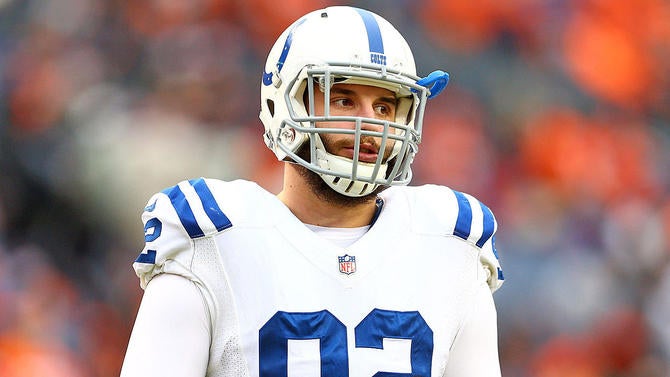
 Jacksonville Jaguars
Jacksonville Jaguars
Blaine Gabbert, QB, 10th overall, 2011: The Jags traded up six spots to take Gabbert, who possessed all the physical tools you look for in a franchise quarterback but struggled to put it all together. He looked gun shy as a rookie, which is understandable given the state of the franchise at the time. In three seasons, Gabbert was 5-22 before the Jaguars mercifully traded him to San Francisco. Matt Jones, the team's 2005 first-round pick, was also a consideration here.
 Kansas City Chiefs
Kansas City Chiefs
Jon Baldwin, WR, 26th overall, 2011: Baldwin lasted just two years in Kansas City, and the Chiefs thought so little of him that they shipped him to San Francisco for the 49ers' draft bust, wideout A.J. Jenkins. Before the '11 draft, Bill Belichick compared Baldwin to Julio Jones. Hey, even geniuses make mistakes.
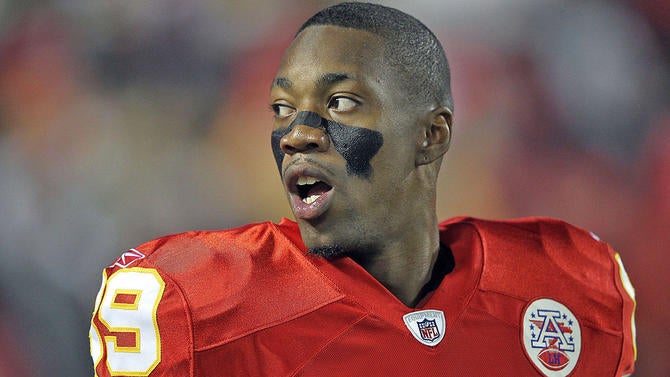
 Los Angeles Chargers
Los Angeles Chargers
Ryan Leaf, QB, second overall, 1998: Leaf was never was comfortable in the spotlight in San Diego. He was 4-17 in two seasons with the Chargers and by 2002 he was out of the league. Leaf, who for years struggled with substance abuse and spent time in jail, has since turned his life around.
 Los Angeles Rams
Los Angeles Rams
Lawrence Phillips, RB, sixth overall, 1996: A star at the University of Nebraska, Phillips had off-field troubles that plagued him throughout his NFL career and beyond. He played in just 25 NFL games with three different teams. In 1996, the Rams thought so much of his potential that they traded then-starter Jerome Bettis to the Steelers. Bettis retired in 2005 and was named to the Hall of Fame. Phillips last played in the NFL in 1999 and his career totals include 424 carries for 1,453 yards and 14 touchdowns. In 2008, Phillips was sentenced to 31 years in prison for convictions that included domestic violence, spousal abuse, false imprisonment and vehicle theft. In January 2016, he committed suicide in his cell.

 Miami Dolphins
Miami Dolphins
Dion Jordan, LB, third overall, 2013: Jordan started one game in three seasons for the Dolphins, who finally gave up on him in March. He was suspended for nearly half his career in Miami, including missing six games in 2014 and all of the 2015 season, for violating the league's substance abuse policy. When it was over, he appeared in 26 games -- just four more than he was suspended.
 Minnesota Vikings
Minnesota Vikings
Troy Williamson, WR, seventh overall, 2005: Williamson wasn't worth a top-10 pick but the Vikings were desperate to fill the void left by Randy Moss. Williamson struggled with drops and in three years in Minnesota never caught more than 37 passes in a season. He played briefly with the Jaguars and was out of the league by 2010.
 New England Patriots
New England Patriots
Chris Canty, CB, 29th overall, 1997: Canty played two seasons in New England and there were reports that then-Patriots wideout Troy Brown was told to take it easy on Canty in practice to build his confidence. It didn't help, and by June 1999, the Pats had seen enough.
"Unfortunately, Chris did not take full advantage of his opportunity with the Patriots," then-coach Pete Carroll said at the time of Canty's release. "I am encouraged by the work and commitment shown by many of our players and expect great competition at that position in camp this year."

 New Orleans Saints
New Orleans Saints
Johnathan Sullivan, DT, sixth overall, 2003: The Saints entered the 2003 draft with two first-round picks and traded both to move up for Sullivan, who lasted three seasons and managed a whopping 1.5 sacks and a forced fumble. He was out of football by 2006.
 New York Giants
New York Giants
Ron Dayne, RB, 11th overall, 2000: The former Heisman Trophy winner was the third running back drafted in 2000, after Jamal Lewis and Thomas Jones. But Dayne went eight picks before Shaun Alexander, who went on to have a stellar career in Seattle. Dayne, meanwhile, played four seasons in New York and averaged 3.5 yards per carry, never rushing for more than 770 yards in a season. In fact, his rushing totals went down each year he was with the Giants, from a high of 770 as a rookie to just 52 yards in 2004.

 New York Jets
New York Jets
Kyle Brady, TE, ninth overall, 1995: There are any number of options to chose from but the Jets selected Brady, who showed little production in college, ahead of Warren Sapp and Derrick Brooks, both of whom are Hall of Famers. Other contenders for biggest Jets bust include Vernon Gholston (sixtth overall, 2009), Kyle Wilson (19th, 2010), Quinton Coples (16th, 2012) and Dee Milliner (ninth, 2013). Gholston, it should be noted, didn't register a single sack in his three-year NFL career.
 Oakland Raiders
Oakland Raiders
JaMarcus Russell, QB, first overall, 2007: Russell had all the physical attributes you look for in a star quarterback but there were concerns about his love of the game and, to put it simply, he ate his way out of the league. He went 7-18 in three NFL seasons, completing just 52 percent of his passes with 18 touchdowns and 23 interceptions.
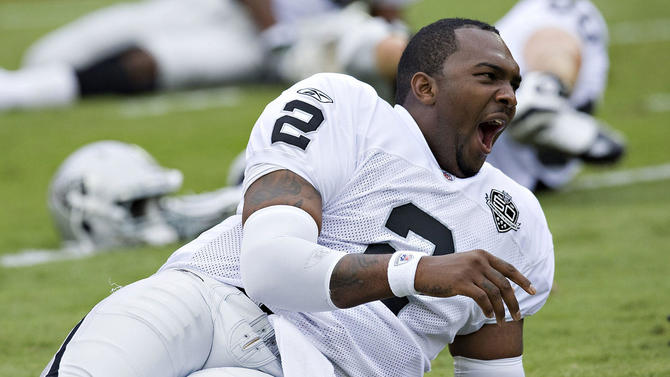
 Philadelphia Eagles
Philadelphia Eagles
Jon Harris, DE, 25th overall, 1997: This quote from Harris tells you everything you need to know: "The Eagles called me in the morning and said they would try to get me; I didn't know they meant in the first round. I thought maybe I would go in the second round sometime."
In two years, Harris started just eight games and registered two sacks. He was traded to the Packers in 1998 but never played in Green Bay.
"I don't care what anybody else thinks," then-Eagles coach Ray Rhodes said at the time. "We did a lot of research on this kid. We feel very positive about this young man. We had some defensive line coaches from around the league call and say they liked this pick. They said it takes a lot of guts to draft the guy you want and not worry what people might think. We'll see how all this comes out in the wash."
It's just more proof that the draft is as much art as science.
 Pittsburgh Steelers
Pittsburgh Steelers
Jamain Stephens, OT, 29th overall, 1996: Stephens was drafted as a project who possessed all the physical traits you look for in a dominating offensive tackle. Unfortunately, his heart wasn't in it. He showed up out of shape for the start of training camp in July 1999, and after failing to complete a series of sprints to test players' conditioning, he was promptly released by then-coach Bill Cowher.
"While there were several factors involved in Jamain's release, it was obvious that he lacked the commitment to compete in this camp. I had no choice but to release him," Cowher said at the time.
Yikes.
 San Francisco 49ers
San Francisco 49ers
Rashaun Woods, WR, 31st overall, 2004: The 49ers needed playmakers to replace the departed Terrell Owens, and on paper Woods fit the bill. He once caught seven touchdown passes in a college game but it didn't translate to the NFL, where he played just one season and managed seven catches and a single score.

 Seattle Seahawks
Seattle Seahawks
Aaron Curry, LB, fourth overall, 2009: Curry was considered the "safest pick" in the 2009 draft but he was shipped to Oakland for a seventh-round pick during the 2011 season after starting 30 games and making just 5.5 sacks. In 13 games with the Raiders, Curry didn't get a single sack.
 Tampa Bay Buccaneers
Tampa Bay Buccaneers
Roberto Aguayo, K, 59th overall, 2016: To be clear: Aguayo isn't the Bucs' biggest draft bust of the past 20 years but we're including him here for one simple reason: Less than a year after the organization drafted him in the second round, why would they bring in competition if they didn't have doubts about his abilities? And while this isn't Aguayo's fault -- he didn't tell the Bucs to draft him well before any kicker should be drafted -- it's certainly an indictment against his skills matching up with what the team thought he was worth.

 Tennessee Titans
Tennessee Titans
Jake Locker, QB, eighth overall, 2011: Like several other names on this list, Locker's heart just didn't seem into football. A former top-10 pick, he arrived in Tennessee with concerns about his accuracy, and only once in four seasons did he crack 60 percent completions. In 2014, he announced his retirement after just 30 career appearances. Not-so-fun-fact: The Titans took Locker ahead of Tyron Smith and J.J. Watt.
 Washington Redskins
Washington Redskins
Robert Griffin III, QB, second overall, 2012: Things started off so well. As a rookie, Griffin led the Redskins to a late-season surge that ended with the team winning the NFC East and making the playoffs. But RG3 was injured in the postseason loss to the Seahawks and he was never the same. He rushed to return to the lineup in 2013 and, in short, was terrible. He continued to struggle, his confidence took a hit, and by the time Mike Shanahan was run out of town, Griffin's fate was all but sealed. New coach Jay Gruden preferred fourth-round pick Kirk Cousins to Griffin, and by 2016, RG3 was in Cleveland. He's currently a free agent and it's unclear if he'll get another shot.




